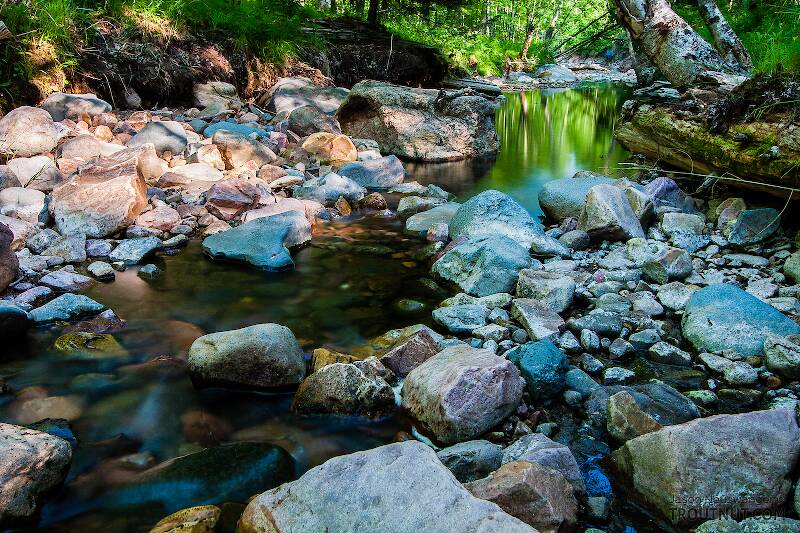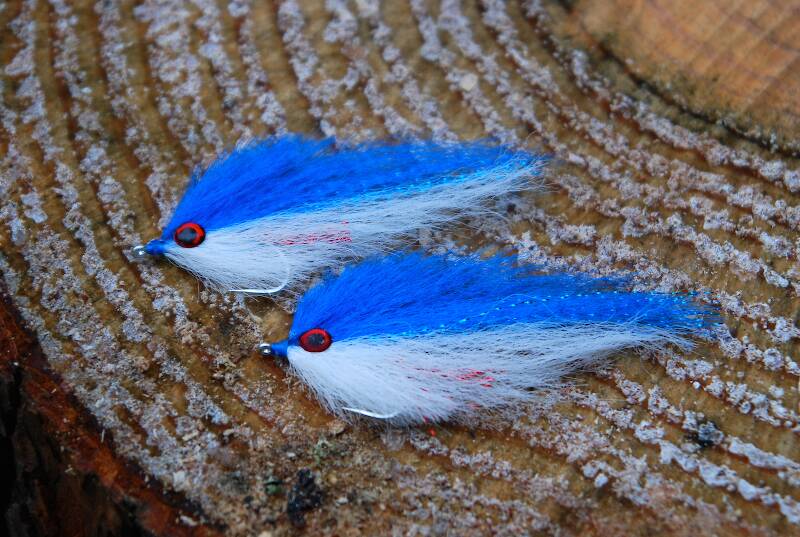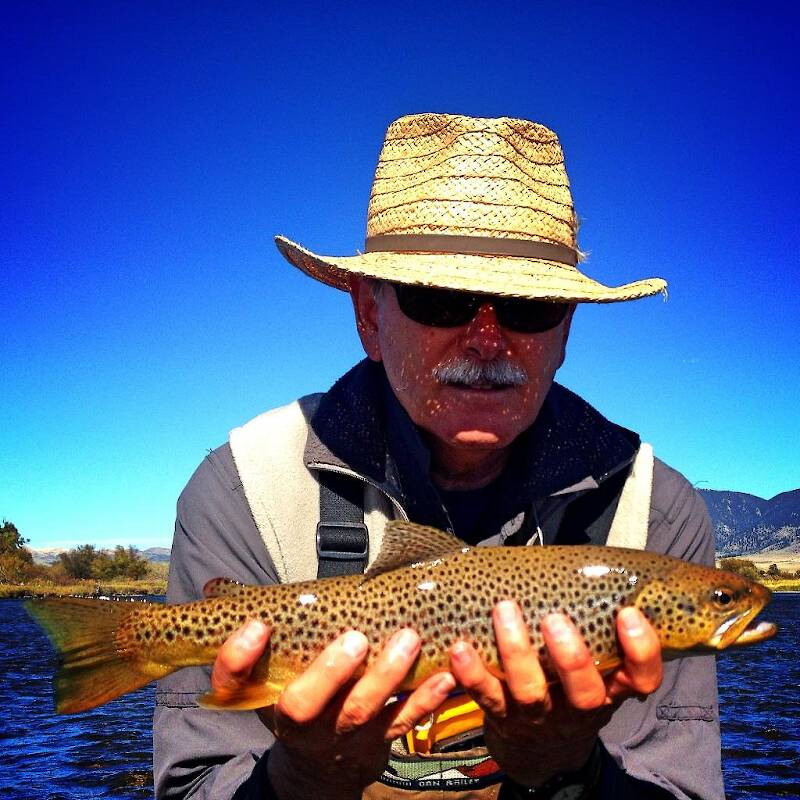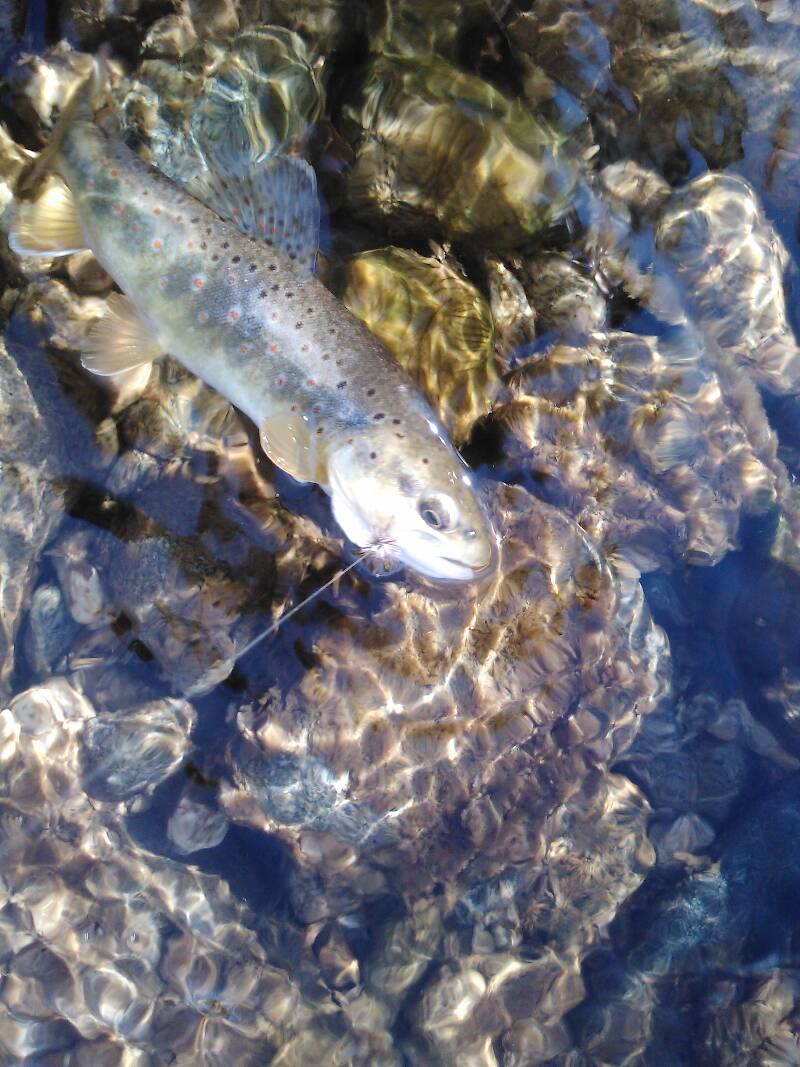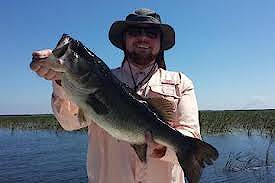
Salmonflies
Pteronarcys californica
The giant Salmonflies of the Western mountains are legendary for their proclivity to elicit consistent dry-fly action and ferocious strikes.
Featured on the forum

It's only barely visible in one of my pictures, but I confirmed under the microscope that this one has a prosternal horn and the antennae are mid-way between the eyes and front of the head capsule.
I'm calling this one Pycnopsyche, but it's a bit perplexing. It seems to key definitively to at least Couplet 8 of the Key to Genera of Limnephilidae Larvae. That narrows it down to three genera, and the case seems wrong for the other two. The case looks right for Pycnopsyche, and it fits one of the key characteristics: "Abdominal sternum II without chloride epithelium and abdominal segment IX with only single seta on each side of dorsal sclerite." However, the characteristic "metanotal sa1 sclerites not fused, although often contiguous" does not seem to fit well. Those sclerites sure look fused to me, although I can make out a thin groove in the touching halves in the anterior half under the microscope. Perhaps this is a regional variation.
The only species of Pycnopsyche documented in Washington state is Pycnopsyche guttifera, and the colors and markings around the head of this specimen seem to match very well a specimen of that species from Massachusetts on Bugguide. So I am placing it in that species for now.
Whatever species this is, I photographed another specimen of seemingly the same species from the same spot a couple months later.
I'm calling this one Pycnopsyche, but it's a bit perplexing. It seems to key definitively to at least Couplet 8 of the Key to Genera of Limnephilidae Larvae. That narrows it down to three genera, and the case seems wrong for the other two. The case looks right for Pycnopsyche, and it fits one of the key characteristics: "Abdominal sternum II without chloride epithelium and abdominal segment IX with only single seta on each side of dorsal sclerite." However, the characteristic "metanotal sa1 sclerites not fused, although often contiguous" does not seem to fit well. Those sclerites sure look fused to me, although I can make out a thin groove in the touching halves in the anterior half under the microscope. Perhaps this is a regional variation.
The only species of Pycnopsyche documented in Washington state is Pycnopsyche guttifera, and the colors and markings around the head of this specimen seem to match very well a specimen of that species from Massachusetts on Bugguide. So I am placing it in that species for now.
Whatever species this is, I photographed another specimen of seemingly the same species from the same spot a couple months later.

Troutnut is a project started in 2003 by salmonid ecologist Jason "Troutnut" Neuswanger to help anglers and
fly tyers unabashedly embrace the entomological side of the sport. Learn more about Troutnut or
support the project for an enhanced experience here.
Mcflyangler on Jun 9, 2016June 9th, 2016, 4:55 pm EDT
The CDC Dry Fly Midge is a perfect imitation for a midge hatch. These tiny flies are fairly easy to tie if you have good eyes, and do really well tandem behind a Griffith's gnat or larger dry fly. They are also really quick to tie, so you can make up dozens of them in an hour for your next trip. Don't be caught off guard by the next midge hatch! keep these in your box at all times!
Hook: Daiichi 1110 size 26 (any 1x length dry fly hook will work) regularly tied from size 20-32.
Thread: 8/0 thread in black, or any color you want to tie this in. Regularly tied in gray, brown, olive and cream.
Hackle: The top feathers of a dry fly cape. These are very small hackle feathers, specifically for small midge flies.
Wings: CDC Feathers. I used "natural dun" color, but common colors are white, brown, and gray.
Music: Sunny, ukulele - Bensound.com
Hook: Daiichi 1110 size 26 (any 1x length dry fly hook will work) regularly tied from size 20-32.
Thread: 8/0 thread in black, or any color you want to tie this in. Regularly tied in gray, brown, olive and cream.
Hackle: The top feathers of a dry fly cape. These are very small hackle feathers, specifically for small midge flies.
Wings: CDC Feathers. I used "natural dun" color, but common colors are white, brown, and gray.
Music: Sunny, ukulele - Bensound.com
Mc Fly Angler
http://www.mcflyangler.com
https://www.youtube.com/c/mcflylures
http://www.mcflyangler.com
https://www.youtube.com/c/mcflylures
Frusso on Nov 24, 2018November 24th, 2018, 4:42 am EST
Nice, easy pattern. Looks promising, so I will be tying some up for the Sierras.
Fishtaler
Iasgair on Feb 11, 2019February 11th, 2019, 10:46 am EST
Looks like I'll be busy tonight tying flies.
Thanks for sharing that with us.
Thanks for sharing that with us.
Martinlf on Feb 11, 2019February 11th, 2019, 1:30 pm EST
Try Tiemco 2488's for midges. Good gap. I also like the Varivas 2300 midge hook, but the wire is a bit light in the smallest sizes. I've broken one and bent another on heavier fish.
"He spread them a yard and a half. 'And every one that got away is this big.'"
--Fred Chappell
--Fred Chappell
Jawyellowba on Feb 11, 2019February 11th, 2019, 7:58 pm EST
Great vid man! Keep up the great work.
Quick Reply
Related Discussions
Topic
Replies
Last Reply

